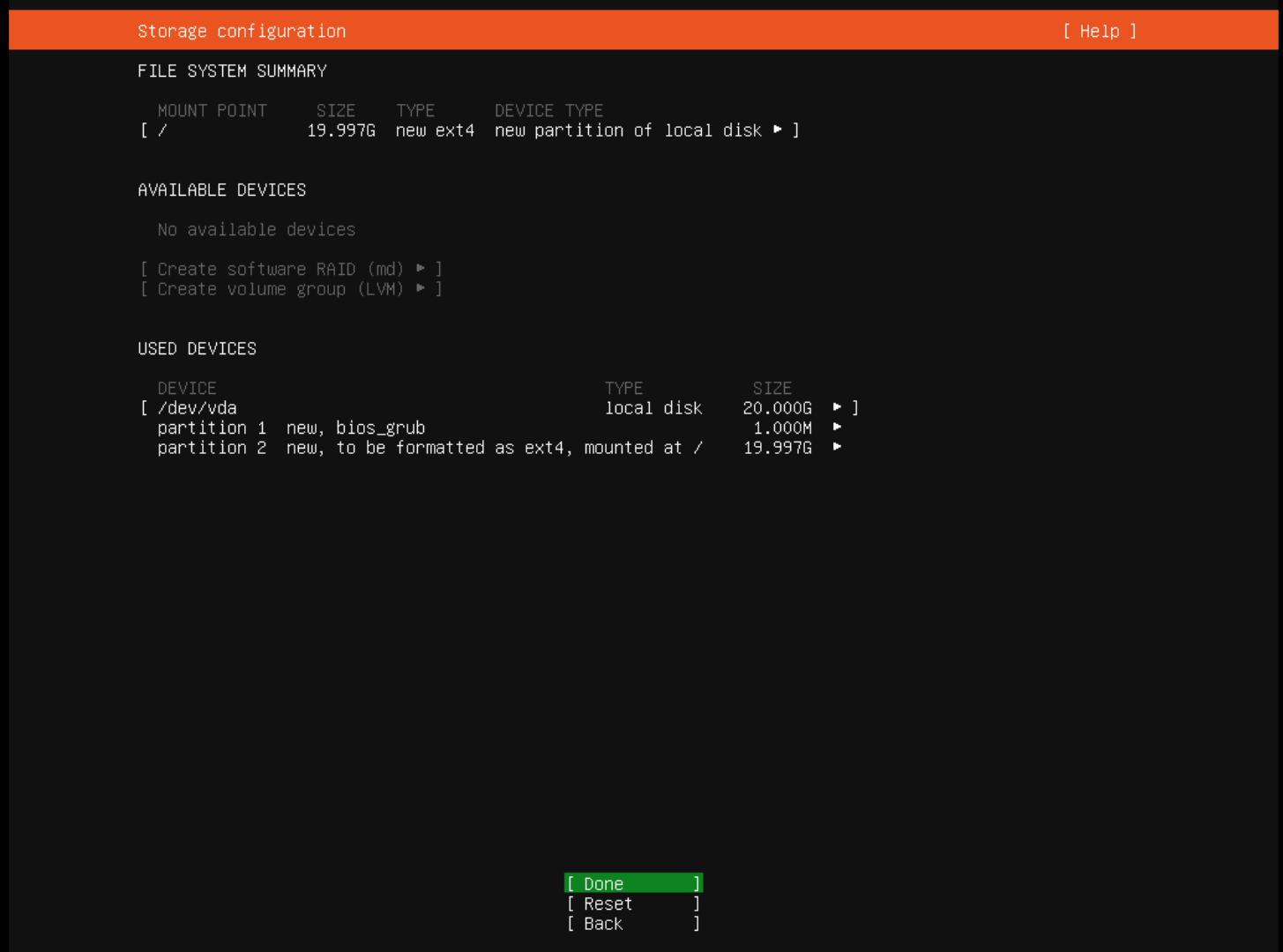Ubuntu 2020.04's Server Install
By EricMesa
- 4 minutes read - 670 wordsAs I mentioned in my k3s on Ubuntu 2020.04 post, I really thought that Ubuntu 2020.04’s server install was prety slick. I’m used to text-only server installs looking like this:
 Arch Linux Installation Begins
Arch Linux Installation Begins
Here’s a step-by-step collection of screenshots and my thoughts on each step of Ubuntu 2020.04’s server install:
 Language Selection
Language Selection
Just starting off, with the language selection, you can see this isn’t the usual ugly ncurses install. It looks like a beautiful matte black.
 Updating installer during installation
Updating installer during installation
Now, this right here is something I’ve never seen (that I can remember - maybe Arch or one of the other distros I looked at a long time ago do this?) and it’s something EVERY distro should do. For years now almost every distro has allowed you to install off the net instead of the CD/DVD/USB/ISO if you have the bandwidth. But this is the first time I’ve seen the ability to update the installer - important if the installer has some bugs (and I do remember in the past some Fedora installers having bugs and requiring me to get an updated ISO).
 Keyboard configuration
Keyboard configuration
After that great bit of innovation, we’re back into familiar territory here, setting up the keyboard.
 Network connections
Network connections
From there we move onto network connections. I’m just going to use this on the KVM NAT to test out server scenarios with Ubuntu. So I’ll just leave it on DHCP within that subnet. I skipped the proxy screen because I never use them and it’s pretty basic.
 Configure archive mirror
Configure archive mirror
Most folks would leave this the same, but it’s possible a University or large institution would have their own Ubuntu mirror to just grab the packages once, rather than for each computer that needs upgrades.
 Guided Storage Configuration
Guided Storage Configuration
Frankly this page looks exactly like most GUI installs, just with text selection instead of radio buttons and check-marks.
 Partitions
Partitions
Interestingly, I think this is one of those places where the larger the institution, most likely the simpler this would be, with users connecting to some sort of NAS or other complicated storage while keeping the front-end servers relatively simple.
 Profile Setup
Profile Setup
This was the screen I found the most interesting as it is the one that diverges the most from Red Hat/Centos/Fedora. First of all, there’s never a root password set. Second, under server’s name - it allows me to set what would be localhost, but doesn’t allow me to enter a localdomain.
 SSH Setup
SSH Setup
This is another radical departure and another one that I like. Well, I think the idea of a server without OpenSSH installed is very weird. BUT! I do like the ability to import an SSH identity for a potentially more secure login. Typically, in my experience, the Red Hat-based distros will have OpenSSH installed by default, but will not have the service enabled or started.
 Popular Server Software
Popular Server Software
When I first installed Ubuntu Server 2020.04, I was already awed by the slick-looking install and updating the installer when I got to this screen. THIS. IS. A. GREAT. FEATURE. Now, maybe Ubuntu Server is more likely to be installed by your Average Joe who got snared into Linux via Plex (as is often mentioned on /r/homelab). One of these persons will show up to /r/homelab or /r/selfhosted once or twice a week to ask what else they should host on a Linux server. This list is a great example of what everyone else is running. The fact that they have sabnzbd on there makes me think this must be from raw numbers, not something Canonical is promoting. SO maybe the engineer installing RHEL doesn’t need this list because if you’re installing RHEL you’re doing it at work and you already know what you need. But I think Centos and Fedora should really consider adopting something like this during the package selection.
And that’s the Ubuntu 2020.04 server installer. A lot of the usual install prompts, but a few innovative ones that I want all the other distros to “steal” for their installers.